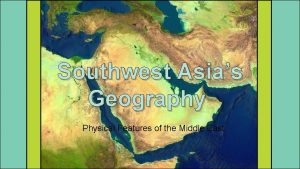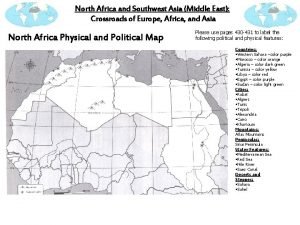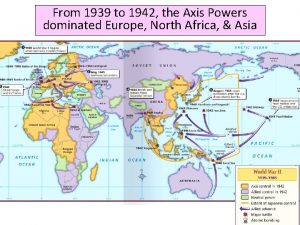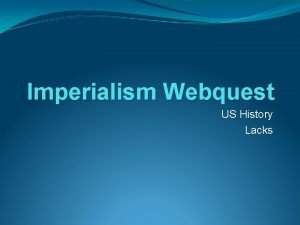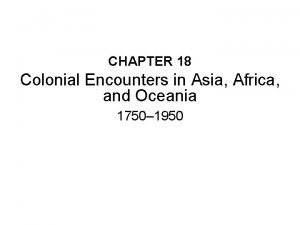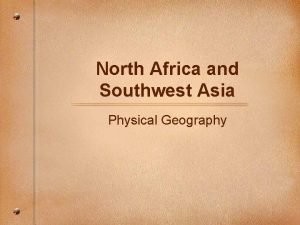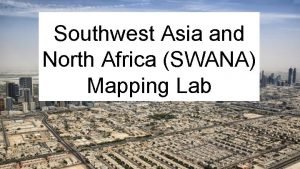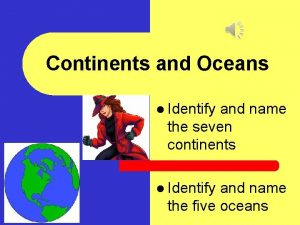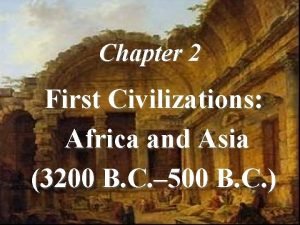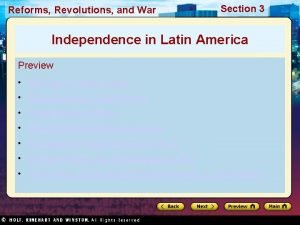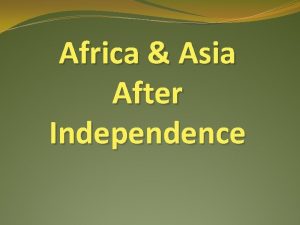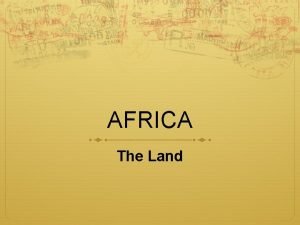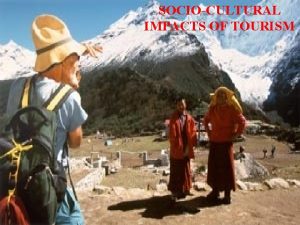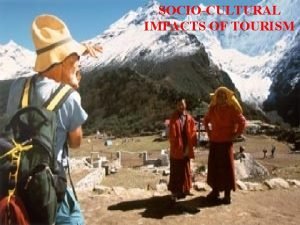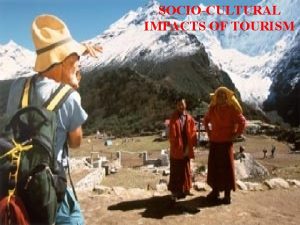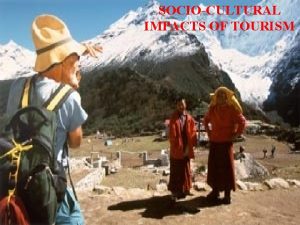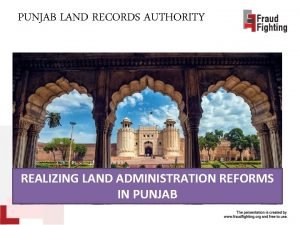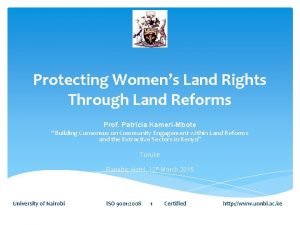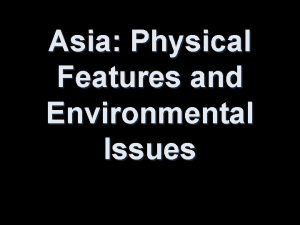Land Reforms in Asia and Africa Impacts on

















- Slides: 17

Land Reforms in Asia and Africa: Impacts on Poverty and Natural Resource Management Workshop in Beijing 24 -25. January, 2010 Stein Holden

Introduction • • Thanks to Ef. D-for funding the workshop Thanks to Gunnar for support Thanks to Jintao for hosting the workshop Thanks to Kei for joining in as editor

Objectives of workshop • Identify researchable topics related to land reforms in Asian countries – Poverty impacts – NRM (especially forest land) impacts • Identify good research questions that can be answered – Within countries – Across countries (Asia and Africa) • Identify testable hypotheses – Within countries – Across countries • Make a realistic plan for preparing book chapters (milestones)

Land reforms • Definition: – Apply a broad definition as compared to some more narrow definitions that are common. This may be illustrated by the types of reforms that we intend to study: • Market-friendly land reform (provision of stronger transfer rights to land) • Reforms aiming to enhance tenure security such as land registration and certification • Redistributive land reforms • Reforms aiming to strengthen land rights of poor and vulnerable groups • Reforms aiming to enhance sustainable land management (investment and conservation incentives)

Land Reforms back on the Agenda • MDGs: Rights-based approaches • Commision for Legal Empowerment of the Poor (CLEP) • Rapid economic development in Asia (change in food demand) • Increasing land scarcity in Africa • New demands for land for food and energy production • Climate change: REDD and the role of forest tenure

New Standards for Impact Assessment • Difficulties of identifying impacts of reforms – Few good studies exist – Randomized experiments infeasible? – Natural experiments hard to find? – Alternative econometric methods required to analyse existing data • Better data sets emerging • Better methods developed • Aim to apply such methods on new data for the book

Issues and Research Questions • What are the poverty reduction effects of alternative land reform approaches? – To what extent have the reforms enhanced productivity, investment and growth – To what extent have the reforms been pro-poor, e. g. benefited the landless, low-caste, women, etc? • How can more socially optimal property rights regimes be defined for agricultural and forest land resources?

Countries to be studied Land distribution Asia Africa Egalitarian land distribution China, Vietnam Ethiopia Medium land distribution Malawi, Uganda Very Skewed land distribution India, Nepal, The Philippines South Africa, Zimbabwe

Historical context: Initial conditions on land rights • What are the initial and historical situation in terms of allocation of the bundle of land rights and obligations? • How is the distribution of land to different groups of society? E. g. is landlessness common? • How is this related to the social power structure? • What roles does land play in the society? – Source of income, food, shelter, employment, safety net, credit, store of wealth, prestige, tax shelter, …. • What alternatives/exit options exist? – E. g. would it be preferable to sell the land to get starting capital for establishing some other business?

The bundle of land (natural resource) rights and obligations • A vector of – Use rights (food, shelter, energy, below ground resources, water, input in production, safety net, collateral, collect firewood, fish ………. . ) and – Tranfer rights (rights to rent, sell/buy, borrow, bequeath, inherit) – Rights of exclusion – Obligations (land conservation, sustainable management, use (not leave idle or abandon) – Restrictions (max and min farm size, transfer right restrictions)

Methodological issues • Identification of most relevant counterfactual – Can be challenging in economy-wide reforms – Internal validity • Establishment of causality • Endogeneity, self-selection – External validity • Cross-country comparisons where relevant – Spillover effects • Economy-wide reforms • Direct and indirect effects • Intended and unintended effects

Effects of Land-to-the-Tiller policies Efficiency Nepal India Vietnam China Equity in land distribution

Effects of land renting Efficiency Nepal India Vietnam China Equity in operational land distribution

Property rights regimes vs. management • Choice between – Private/individual rights – Communal rights – State ownership • Who manage the land – Individual management – Group/community management – State (company) management • Do land reforms move towards more optimal property rights regimes and management regimes?

Property rights regimes vs. Management (use) rights Individual management Communal (group) management State control and management Mixed management (combination of individual and group) Individual rights Communal rights State ownership PPR Individual use rights/ Open access CPRM State company(ies)

Forest tenure reforms • • • Decentralization processes Increasing value of forests Economic development Increasing population pressure/land scarcity Individual vs. Group management Duration of contracts Investment capacity/Credit access Management skills Economies of scale – Management – Harvesting – Marketing

Group work • To address all the objectives • I look forward to a productive and constructive workshop!
 Inlet of indian ocean between africa and asia
Inlet of indian ocean between africa and asia Swana region
Swana region Political map of north africa and southwest asia
Political map of north africa and southwest asia Goodguysww.
Goodguysww. Inlet of indian ocean between africa and asia
Inlet of indian ocean between africa and asia European imperialism in africa and asia webquest answers
European imperialism in africa and asia webquest answers Colonial encounters in asia africa and oceania
Colonial encounters in asia africa and oceania Chapter 18 colonial encounters in asia and africa
Chapter 18 colonial encounters in asia and africa Country uniting africa and sw asia
Country uniting africa and sw asia Asia africa north and south america
Asia africa north and south america Kums definition geography
Kums definition geography European footholds in the eastern hemisphere
European footholds in the eastern hemisphere Southwest asia and north africa physical map
Southwest asia and north africa physical map North africa and southwest asia mountains
North africa and southwest asia mountains Physical map of swana
Physical map of swana 7 continents and 5 oceans map
7 continents and 5 oceans map Egypt in africa or asia
Egypt in africa or asia Reforms revolutions and war answer key
Reforms revolutions and war answer key
